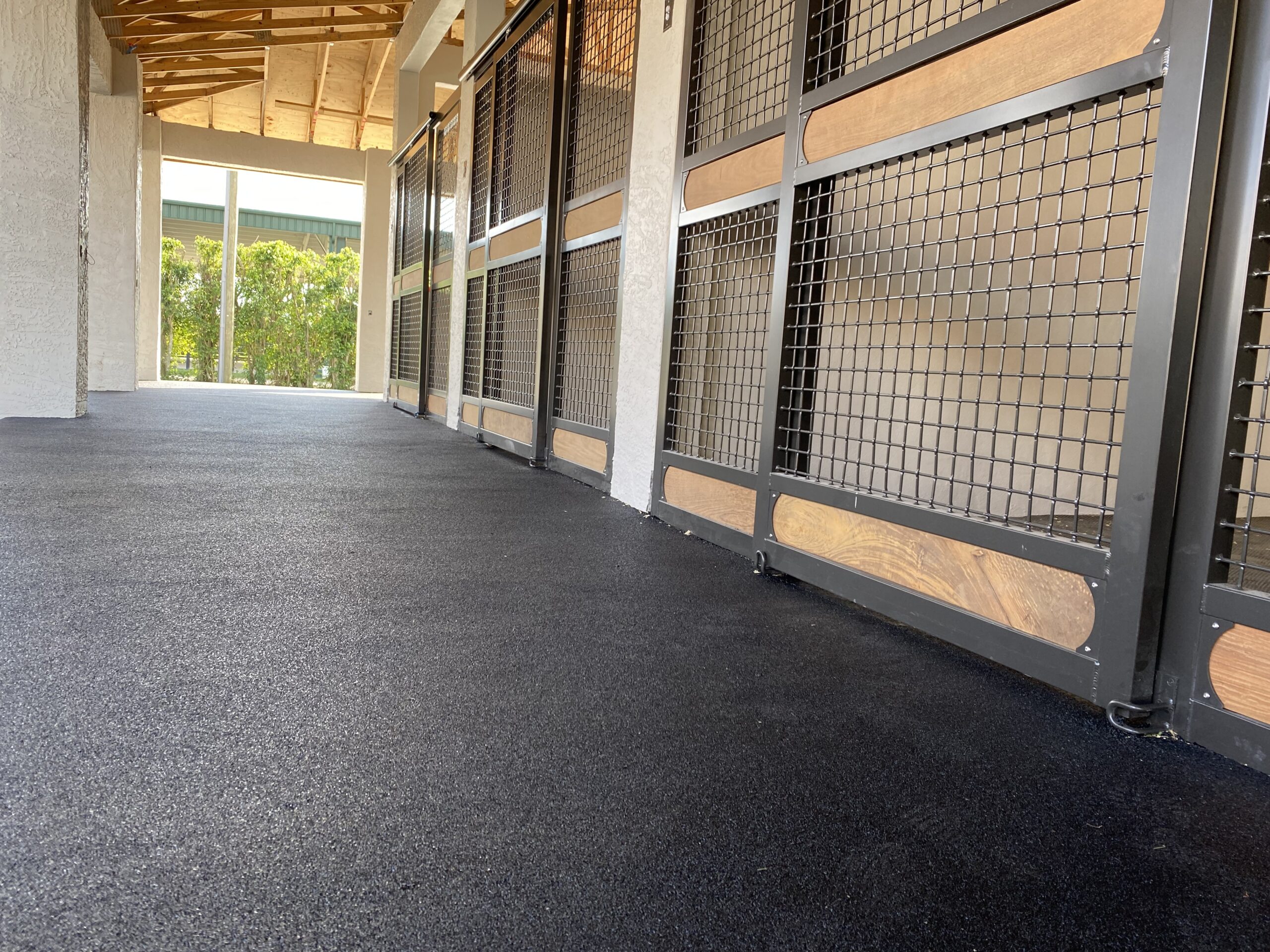Why Flooring Matters in Barn Design
Barn flooring plays a bigger role than most people realize. The right surface impacts not only the safety and comfort of horses but also the daily efficiency of barn operations. A well-chosen material can reduce injury risk, simplify cleaning, and withstand the constant wear from hooves, equipment, and weather. Poor flooring, on the other hand, can lead to unnecessary maintenance costs, pose hazards to animals and handlers, and result in premature deterioration of the barn structure.
Every barn has unique needs, and what works for one facility may not be the best option for another. Understanding the pros and cons of each flooring type helps owners make informed decisions that support both their horses’ well-being and the long-term value of their property.
Traditional Flooring Choices for Barns
Historically, dirt or clay floors were typical because they were inexpensive and provided natural cushioning. While affordable, they require significant upkeep, becoming uneven and messy over time. Concrete has also been widely used for its durability, but it can be hard on hooves, slippery when wet, and cold in winter.
Another common option is stone dust, which provides a firmer base than dirt but still requires leveling and replacement over time. Rubber mats are often added on top of these bases to provide cushioning and traction, though mats can shift or curl at the edges, creating tripping hazards.
Rubber Mats and Paver Systems
Rubber mats remain one of the most widely used upgrades for barn aisles and stalls. They offer improved traction, reduce stress on joints, and make cleaning easier compared to bare concrete or dirt. However, mats often need to be cut and pieced together, leaving seams where moisture and debris can collect. Over time, this can create hygiene concerns and increase the need for replacements.
Pavers, including both brick and rubber interlocking systems, are another option. They provide a visually appealing finish and good drainage when appropriately installed. However, the installation process is labor-intensive, and pavers can shift or become uneven if the base is not perfectly prepared.
Modern Rubber Flooring Systems
One of the most effective flooring innovations for barns is the use of poured or rolled rubber systems. Unlike mats, these solutions provide a seamless surface without joints or gaps where dirt, bacteria, or urine can accumulate. They are designed to absorb impact, improve traction, and withstand heavy traffic in high-traffic facilities.
Equitan, for example, is a next-generation rubber flooring system explicitly engineered for equestrian environments. Unlike basic mats, it is permanently installed, creating a durable, non-slip, and low-maintenance surface. It eliminates the issues of shifting mats, improves hygiene by preventing liquid seepage, and provides a cushioned surface that reduces joint stress for horses standing for long periods.
Comparing Flooring Options for Barns
When deciding between flooring systems, it helps to consider key factors such as:
- Safety – Non-slip surfaces are crucial in preventing injuries.
- Durability – Materials should withstand heavy hoof traffic and cleaning routines.
- Maintenance – Seamless options require less upkeep than those with gaps or seams.
- Comfort – Cushioning reduces stress on joints and improves horse welfare.
- Hygiene – Surfaces that resist liquid penetration reduce odor and bacteria buildup.
Traditional flooring may be suitable for barns on a tight budget, but investing in a modern system often yields long-term savings by reducing replacement costs, cleaning needs, and health risks.
Why Equitan Stands Out
Equitan rubber flooring outperforms traditional mats, pavers, and concrete by combining safety, durability, and ease of maintenance. It was designed with the equestrian world in mind, making it an ideal choice for barns, stables, and training facilities. The seamless installation prevents shifting or curling, while the cushioned surface supports both performance horses and leisure companions.
Beyond functionality, Equitan also enhances the overall look and feel of a barn. Its clean, professional finish appeals to owners who want both performance and presentation. For barns that wish to minimize long-term maintenance and maximize horse safety, Equitan represents a best-in-class option.
Choosing Flooring That Protects Your Horses and Facility
Barn flooring is more than just a surface—it’s a foundation for safety, efficiency, and long-term value. While dirt, stone dust, and concrete may be affordable starting points, they often create maintenance challenges over time. Mats and pavers offer improvements but come with limitations such as seams, uneven wear, and added upkeep.
Modern rubber flooring systems offer a more effective solution, combining comfort, hygiene, and durability into a single installation. For horse owners who value both safety and convenience, these systems are a significant upgrade.
Equitan, in particular, has become the go-to choice for barns seeking a flooring system specifically designed for equestrian use. It offers long-term performance, reduces maintenance, and supports the health and comfort of horses. Investing in the right flooring ensures that both the animals and the facility remain in top condition for years to come.

